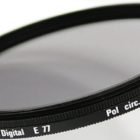Every wonder how camera lenses are made?
If you are a serious photographer and want to indulge your hobby or profession with the very best of equipment, it is not difficult to spend thousands of dollars doing so. With the compact point and shoot cameras, the initial purchase is pretty much it for the camera equipment part but if you are like me, using a DSLR like the Canon Digital Rebel or the Nikon D40, you will find that your camera equipment purchases never stop at the original camera body and standard lens. If you are into wildlife photography, then you have to get a telephoto lens; closeups of flowers, a macro lens; portraits will require a high quality fast prime lens and so on. The thing is though that these lens, especially the higher quality ones, are a substantial investment. For example, the 17-40 F4L lens that I purchased for my landscape photography costed well over $700 which is more than the cost of the Canon Digital Rebel camera body I have. You could go with a cheaper lens; a comparable lens of the same zoom range and maximum aperture will go for half of the Canon price but the difference in the quality in the photographs taken between the two lenses will be considerable.
But why do these lenses cost so much? Well, if you check out this site of the Canon Camera Museum, they provide a documentary of sorts on a Virtual Len Plant which shows all of the steps needed to create a high quality lens starting with the raw material for all glass, silica and then through each process of making the glass, grinding the glass, application of coatings which then it all put together in the assembly of the lens. There is a lot of work involved and the more specialised the lens, the more expensive it is especially for the large zoom lenses found at sporting events. Those lens go for $5000-20000 depending on the size.
I doubt I will spend that much for a lens if I just remain as serious amateur. But if remain with a major camera manufacturer, in my case Canon, you can be readily assured that the lenses you buy today will be compatible across the whole DSLR line now and for the foreseeable future.



